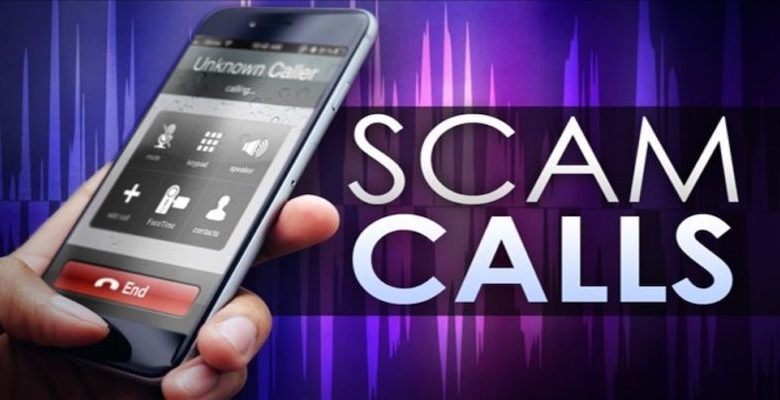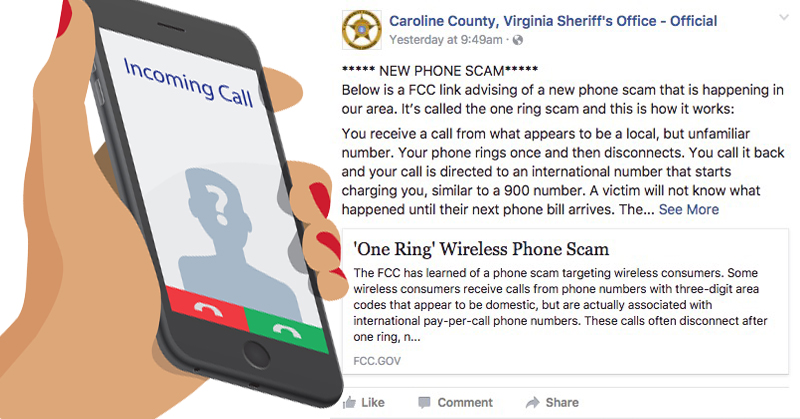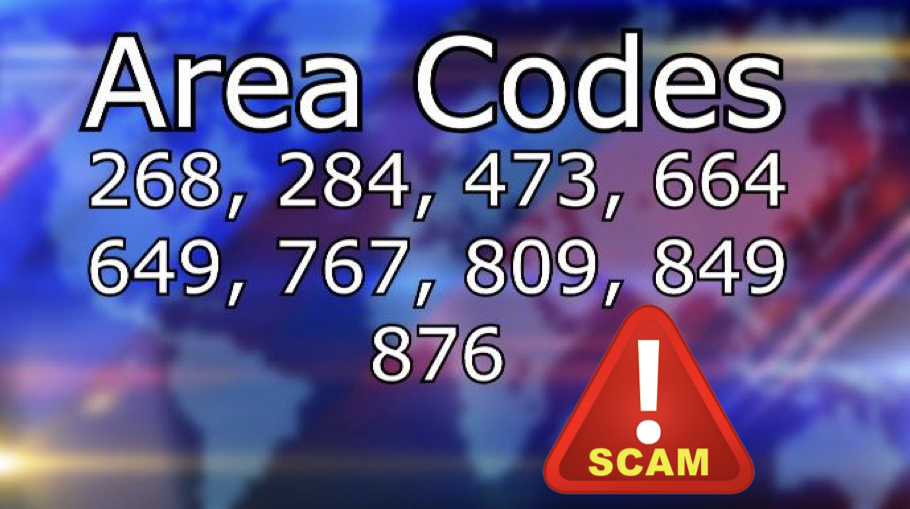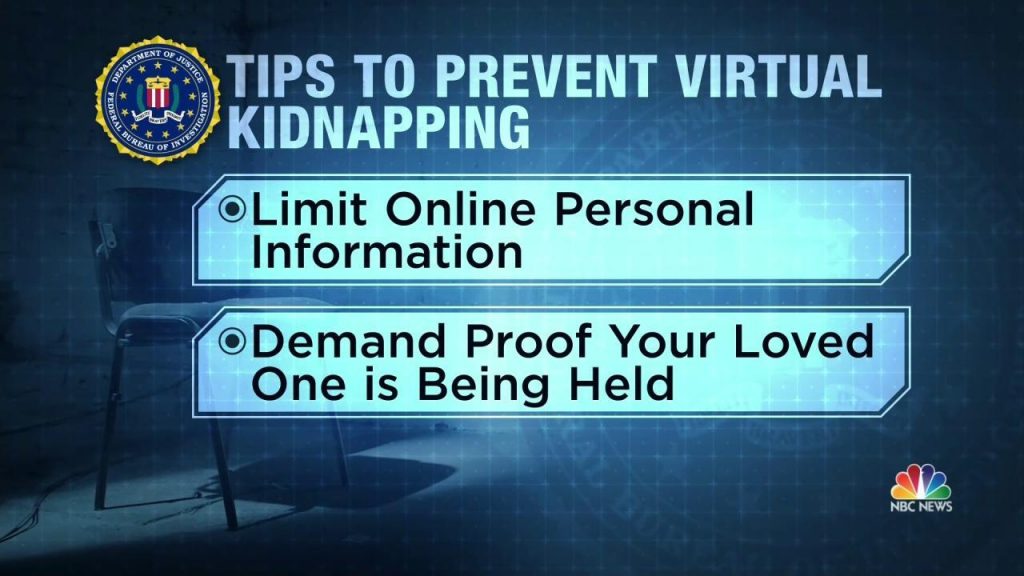
Scam Warning For Cell Customers
ATTENTION: A dual scam warning has been issued for cell phone customers.
Technology
The first scam warning involves the “one-ring” call scheme.
For most people, an incoming phone call that stops after a single ring and doesn’t produce a callback or voicemail will ignite instant curiosity — particularly when the number on the Caller ID is unrecognized. In such a scenario, almost everybody will redial the incoming call to find out who was calling. However, the worst thing to do is call the number back.

According to the Federal Communications Commission, international scammers at off-shore locations are usually behind the one-ring phone calls. In fact, they are betting on you being curious enough to call the number back so that your call is then rerouted to an international destination and you are charged a connection fee, as well as significant per-minute charges for as long as they can keep you on the line. These fees will then show up on your bill as premium services, international calling, or toll-calling and the scammers will have gotten away with your hard earned cash.
One-ring calls may appear to be from phone numbers somewhere in the United States, including three initial digits that resemble U.S. area codes. But savvy scammers often use international numbers from regions that also begin with three-digit codes – for example, “232” goes to Sierra Leone and “809” goes to the Dominican Republic. Scammers may also use spoofing techniques to further mask the number in your caller ID display. – FCC website
To avoid the scam, the FCC suggests the following:
- Don’t answer or return any calls from numbers you don’t recognize.
- Before calling unfamiliar numbers, check to see if the area code is international.
- If you do not make international calls, ask your phone company to block outgoing international calls on your line.
- Always be cautious, even if a number appears authentic.
.

The second scam warning preys on your emotions and the love of your family.
Mark Walker of Noblesville, Indiana, received an incoming call from his daughter, Rachel. However, the voice on the other end was not his daughter but rather a manic man who said he had kidnapped Rachel and was screaming demands for cash and threatening violence.
“He says he’s going to kill my daughter unless I get him $1,000 fast,” Walker said. “This sudden confusion flushes over you. I knew she was on her way to school to pick up the twins. Could something have happened on the way? I’m thinking a lot of things at once.”
During the 2 minute call, the man demanded that Walker go to Walmart and send a Moneygram wire transfer for $1,000 in exchange for his daughter’s safe release.
Being a private investigator, Walker was soon able to calm himself enough to ask to speak to his 34-year-old daughter. The man refused.
“That was the first red flag,” Walker said.
Next, he had his wife call his daughter from another phone. When she answered, Walker realized he was the victim of what the FBI says is a “virtual kidnapping” scam.

Here’s how the scheme works: Hackers gain access to mobile phone contact lists and then use phone-spoofing technology to appear as if they are calling from the purported kidnapping victim’s phone. If they catch the right person and press their emotional buttons into believing a loved one is in danger, they can scam thousands of dollars from multiple people in a single day.
“Spoofing involves a call placed from any voice-over-IP service, such as Skype, or a specialized app that allows users to enter any host number they want — whether it’s a made up number, a number in their address book, or one from the White House. It’s so easy, anyone could do it,” said FBI International Violent Crimes Unit Chief Matthew Horton. “It’s a quick way to make money — and it’s a lot easier to conduct a virtual kidnapping than a real one,” he added.
Victims said they heard screams in the background that were allegedly coming from their loved one. Another spoofing scam targeted parents and grandparents who were asked to bail their child out of jail.
“This is the next level. This is a high-pressure call that has instant impact,” FBI Special Agent Doug Kasper said of the overseas criminal networks. “The ability to spoof phone numbers is what makes it so instantly scary.”
According to Walker, he became suspicious when the extortioner only asked for $1,000.
“No one is going to kidnap someone for just $1,000,” Walker said. “It’s not worth it,” adding that the low dollar demand combined with the specific request that it be a Moneygram from Walmart as payment “was a telling sign.”
Walker also said the caller never identified Rachel as his daughter.
“He kept saying, ‘You know Rachel,’” Walker said.
Scammers regularly dial dozens of potential victims in a single day hoping to get a hit on at least one random person.
So, take heed to this dual scam warning. If you ever find yourself the victim of the one-ring scheme or kidnapping phone scam, contact the FBI or your local law enforcement immediately to report the crime. Be prepared to provide as much information as you can, including the phone number from which the call was received. You may also file a report with the FBI’s Internet Crime Complaint Center at www.ic3.gov.






Hmm. They (scammers) sure are busy aren’t they…smh!
Well…I have a cell-phone but I use it as little as possible…and I do mean very little. In fact, my friends, family members and even colleagues know not to call me on my cell unless it’s absolutely necessary. They also know not to expect me to answer their call if I’m driving when they call. And don’t get me started on texting!!! NOT into it…not at all.
But this is certainly important information to have.
Thanks DJ for the heads-up!